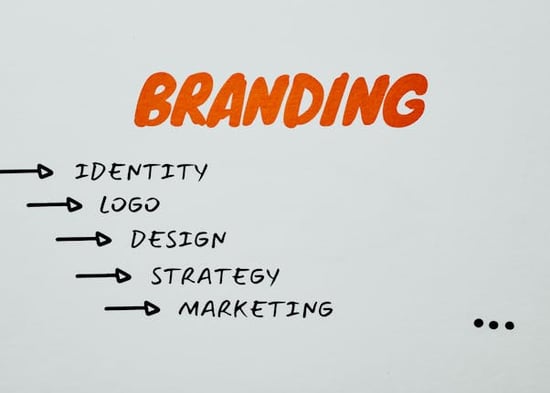
With so many brands competing for attention, being unique is the key to getting an edge. Customers have endless choices, so if your brand doesn't offer something special, it may get overlooked. Now is the time to refine your approach, highlight what makes your brand different, and set yourself up for long-term success.
These strategies will help you and your brand stay ahead of the competition.
-
Define and Share Your Brand’s Purpose
People connect with brands with a cause or purpose beyond their bottom lines. Even large enterprises can learn from this by supporting an advocacy like sustainability to help connect with their customer base.
According to a Nielsen report, 73% of global consumers say they would change their buying habits to support environmentally friendly brands. Customers who see that your brand supports something they believe in are more likely to stay loyal.
A clear purpose helps shape your messaging, design, and customer experience. For example, Patagonia focuses on sustainability and makes no secret about it. Customers who care about the environment choose Patagonia because they share the same values.
-
Highlight What Makes You Different
Your unique value proposition (UVP) tells customers why they should pick your brand instead of someone else’s. It explains what makes your products or services better than the competition. Whether it's creative design, high durability, or exclusive features, your UVP should be clear and consistent everywhere you promote your brand.
A case study published by e-commerce website Scandiweb found that optimizing a UVP can boost customer engagement by 35%, proving how important it is to clearly explain why your brand stands out. Successful brands also continuously update their UVP to keep up with industry changes and consumer expectations.
-
Build a Strong Brand Strategy

A successful brand doesn’t happen by accident—it requires planning and execution. Using brand strategy services helps align your brand’s visuals, messaging, and customer interactions. A strong strategy builds trust and recognition, making your brand stand out.
A 2021 McKinsey survey found that two out of three American consumers consider a company’s values when making buying decisions. You need a brand strategy that will help you connect with your audience with authenticity. That requires establishing a long-term plan—brand positioning, customer engagement tactics, and market research—that allows your brand to gain the right attention.
-
Create a Memorable Look and Voice
The way your brand looks and sounds matters. A great logo, consistent colors, and a distinct style make your brand easy to recognize. Take Coca-Cola, for example. Its red and white colors, script font, and uplifting messaging have remained the same for years, making it instantly recognizable worldwide.
That kind of consistency takes a lot of work, but it pays back manyfold. Investing in professional branding and design services helps you create a lasting visual and verbal identity that customers will associate with trust and quality.
-
Focus on Customer Experience (CX)
Providing a great experience makes customers more likely to stick with your brand. From first contact to post-purchase support, making every step easy and enjoyable builds loyalty. Brands that focus on personal interactions and great service keep customers coming back.
Businesses that integrate customer feedback, improve their online and offline interactions, and invest in high-quality customer support are more likely to achieve long-term success.
-
Tell Stories That Connect with Customers
A good story makes your brand feel personal. When customers know your brand’s history, values, and mission, they feel more engaged. Visual inspirations can enhance your storytelling, making it more impactful and resonant. Nike's "Just Do It" campaign is a great example of storytelling. Sharing inspiring stories of athletes overcoming challenges motivates people while reinforcing its brand message.
Brands that use storytelling effectively create emotional bonds with their customers, increasing brand loyalty and recall.
-
Keep Improving Your Products

Being different isn’t just about branding—it’s also about offering something better. Brands that constantly improve their products stay ahead of the competition. According to McKinsey, companies that focus on innovation grow 2.6 times faster than those that don't. Apple's ongoing improvements to its design and technology help it stay a leader in the industry.
You can't afford to rest on the laurels of past achievements. You need to keep investing in improving your product design to meet, or even lead, trends. That will help you get and maintain your edge.
-
Show Your Expertise
Customers trust brands that know their industry well. Sharing knowledge through blogs, webinars, and events builds your reputation as a leader. For example, HubSpot provides interesting and useful marketing research and educational content. This has helped the company gain trust among its readers and become the go-to for anything related to inbound marketing.
Brands that publish content offering valuable insights and expert advice establish credibility. This attracts new customers and helps them differentiate themselves from competitors.
-
Partner with Other Brands
Working with influencers, experts, or other businesses can help you reach new audiences. Strategic partnerships introduce your brand to more people and create new opportunities.
A good example is the partnership between Starbucks and Spotify. Almost a decade in, it still works. It lets customers influence in-store playlists via the Starbucks app, personalizing each visit to make it more engaging. Rewards members also got access to exclusive Spotify content to build brand loyalty.
These marketing campaigns can significantly expand a brand's reach and influence if the collaboration is between reputable brands.
Take Action to Differentiate Your Brand
A strong, well-differentiated brand helps you get the attention of your target market, earn customer loyalty, and keep your edge in the long run. However, you need a well-planned brand strategy, consistency, and adaptability to changing trends to stand out in a competitive market. By using these nine strategies, you can build a brand that is not only memorable but also easily recognized by customers.